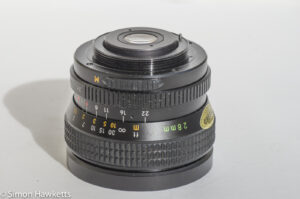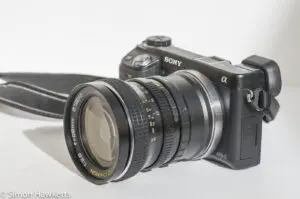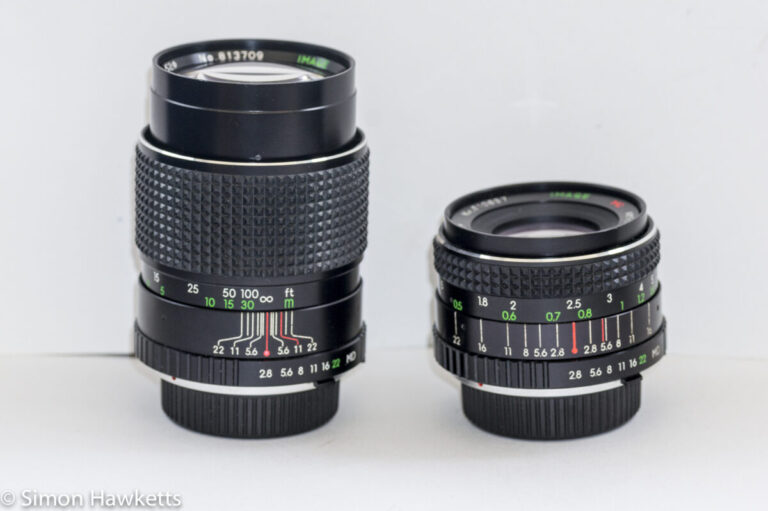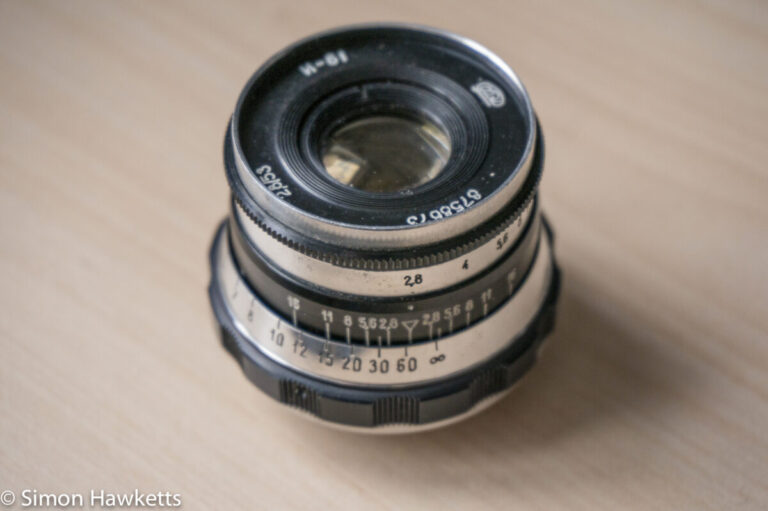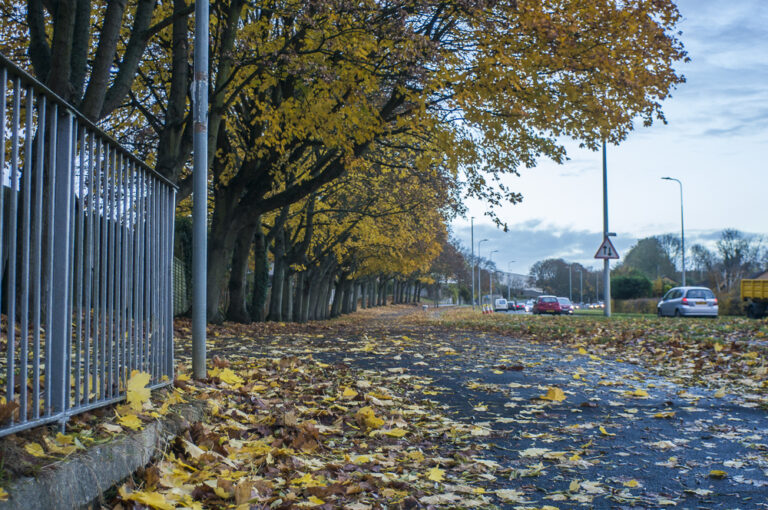Auto Chinon 28mm f/2.8 M42 lens on digital camera
This is a review of the Auto Chinon 28 mm M42 mount f/2.8 lens when used on Sony NEX 6 and Ricoh GXR APS-C digital cameras.
Auto Chinon 28mm f/2.8 Images
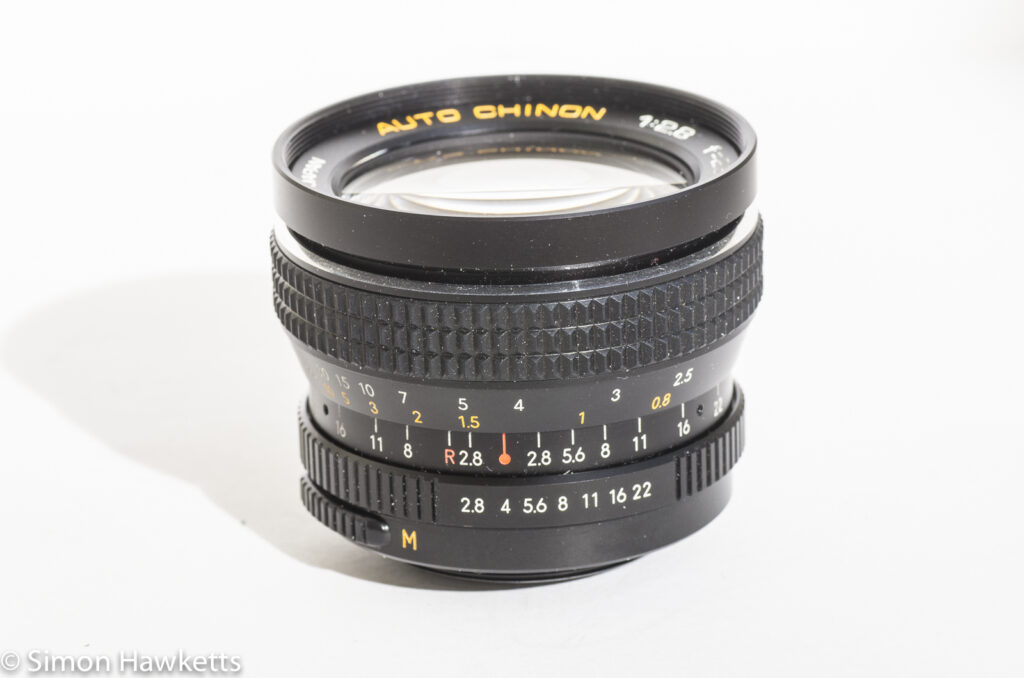
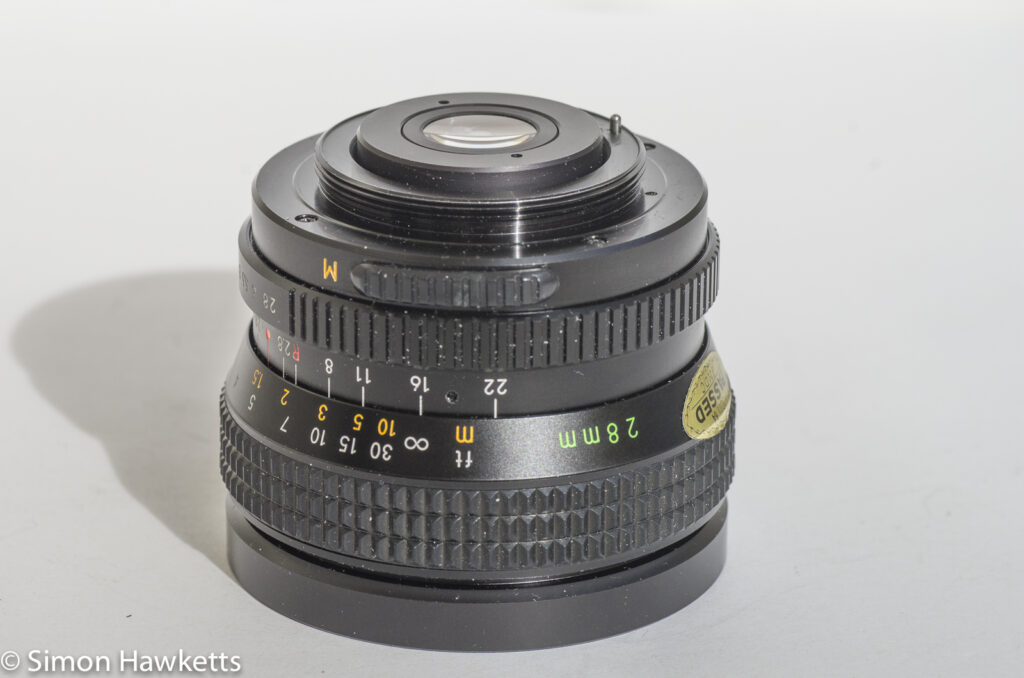

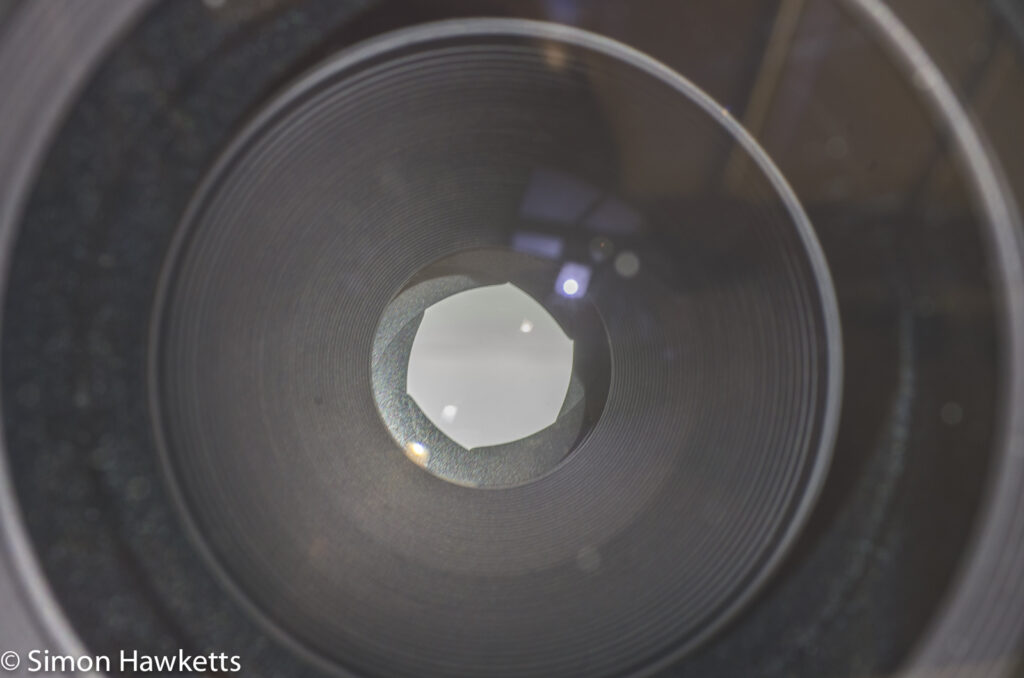

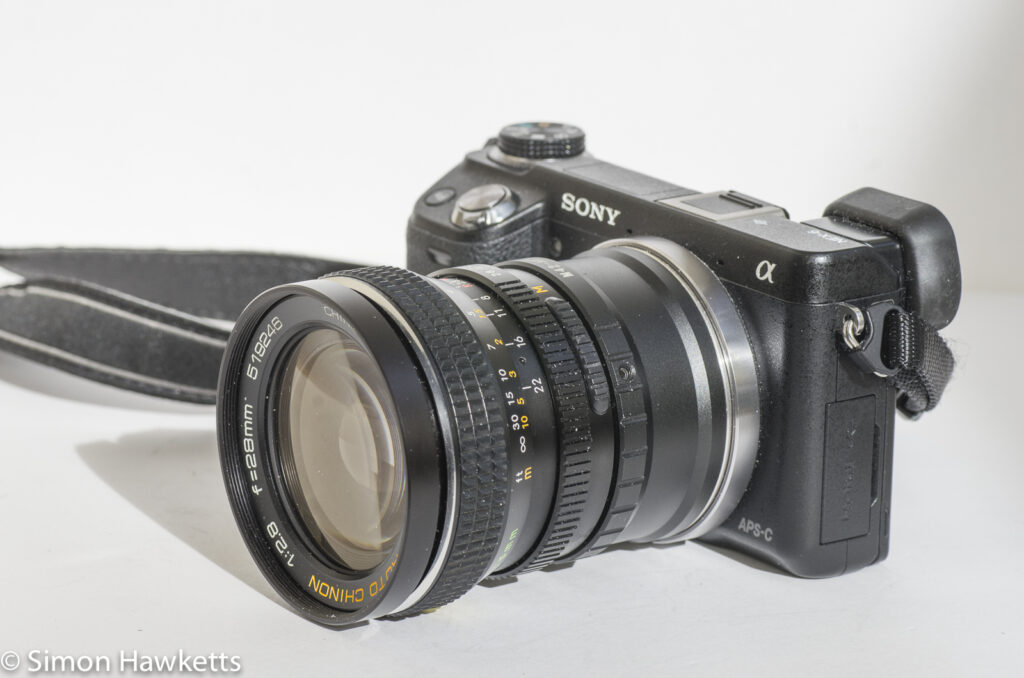
My Auto Chinon 28mm Lens
I was given my copy of this lens by my cousin Therese and her husband Mike when they discovered at a family get-together that I’m a collector of vintage camera equipment. Mike used to be an avid photographer and bought a Chinon CX with a variety of different lenses, but for the last few years they have been unused, and so he passed them on to me.
All the equipment Mike gave me is in excellent condition, but this lens is almost as it would have looked when originally unwrapped from the box. All the controls are beautifully smooth to operate and there isn’t a mark on either the optics or the paintwork.
Auto Chinon 28 mm f/2.8 description.
This is an M42 mount lens with a manual/auto diaphragm switch and a pin in the mount to close the aperture at the point of taking a picture. Of course when used on a digital camera the pin and auto setting are ignored, and the switch is set to manual.
In manual mode the aperture just stops down to the value selected on the aperture ring. Talking of the aperture, it’s a 6 blade affair and covers a reasonably fast f/2.8 to f/16 in half stop clicks with a final full stop click to f/22. The front element of the lens is quite large even for a wide angle lens, and oddly doesn’t have the usual mark to show the filter size, so I measured it and found it to be 62 mm.
It’s a nicely made unit with the focus control in particular having a nice smooth action. It’s quite an easy lens to pick up on the second hand market, with prices in the £20 to £40 range, although as always it’s cheaper to buy a camera with the lens supplied than buy the lens by itself (counterintuitive, but invariably true). The focal length of 28 mm converts to 42 mm on most APS-C cameras, which makes it a useful slightly wide standard lens.
Taking pictures with the Chinon 28mm f/2.8
I used the Chinon 28 mm over the course of several days with my Ricoh GXR camera & A12 Leica mount sensor/M42 adaptor and also my Sony NEX 6 mirrorless with M42 adaptor.
Ricoh GXR
With the Ricoh GXR I used aperture priority mode and spot metering because I went out quite early with the camera and the sun was very low in the sky, so I wanted to be able to easily pick the point I was metering from.
I found the Chinon lens quite easy to get along with, although for the majority of the shots I took I was quite surprised at how much apparent depth of field there was in the EVF. Even on f/2.8 it was difficult to be certain that I’d got the focus point exactly right because the majority of the picture seemed to be in focus most of the time anyway.
As I said above, on an APS-C sensor camera like the GXR, this lens is an equivalent focal length of 42 mm, which is slightly wide angle, but not too much, so I would have expected a bit less depth of field at f/2.8. It’s possible that the effect was exacerbated by the Ricoh’s focus peaking mode (I used mode 2 which makes the whole image a sort of grey picture with just the outlines showing) and the fact that the morning I was out with this combination it was slightly misty.
I shot a variety of pictures, and I’ve included a few in the gallery below. My impressions of the lens on this camera were that it is a capable performer but not startling – actually I was slightly disappointed with the lens at this point because, for some reason, I’d expected it to be really good. There is a little chromatic aberration in some of the pictures of trees against the bright sky, but this should be easily correctable in Lightroom.
Sony Nex 6
When the lens was fitted to the Sony NEX 6 I shot in shutter speed priority with auto ISO and matrix metering. In this mode, since the lens has an aperture ring to select the aperture value and the camera body allows the shutter speed to be set, the camera works in the same way that the Pentax ‘Shutter and Aperture priority’ mode works. You can set both parameters and the camera adjusts the ISO to get the exposure right.
Interestingly, on the Sony, the focus worked exactly as I expected it to with the perceived depth of field a lot narrower than on the Ricoh.
To my mind the pictures from the NEX 6 seemed to have more impact than those from the Ricoh. I guess the Sony is a much more modern camera with a newer sensor, so that isn’t a completely unexpected result, and the difference is not marked but quite subtle.
Auto Chinon 28 mm Sample Pictures
The pictures I took are shown below.
They are not spectacular photos, because I took them on a walk I’ve done hundreds of times over the last 5 years and therefore these are all pictures I’ve taken many times over that time. I believe they do show the capabilities of the lens on a digital camera, however.
All the pictures were taken in RAW and imported into Lightroom for some basic adjustments of white balance, exposure tweaks, clarity and noise reduction etc. To see which camera was used to take any individual photo have a look at the metadata on the individual picture page.
I think the results are good but not spectacularly so. I think the Chinon lens is definitely better than most of the Optomax lenses I have but not for example up to the standard of the Takumar 28 mm f/3.5 which I would say is my favourite 28 mm prime.
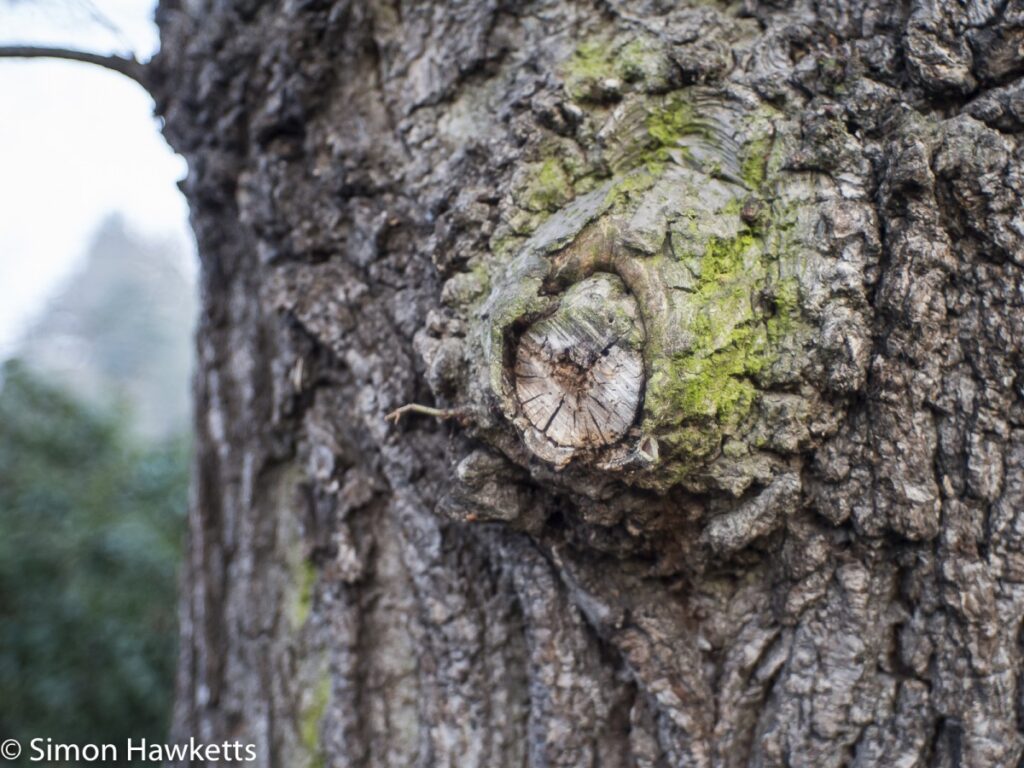
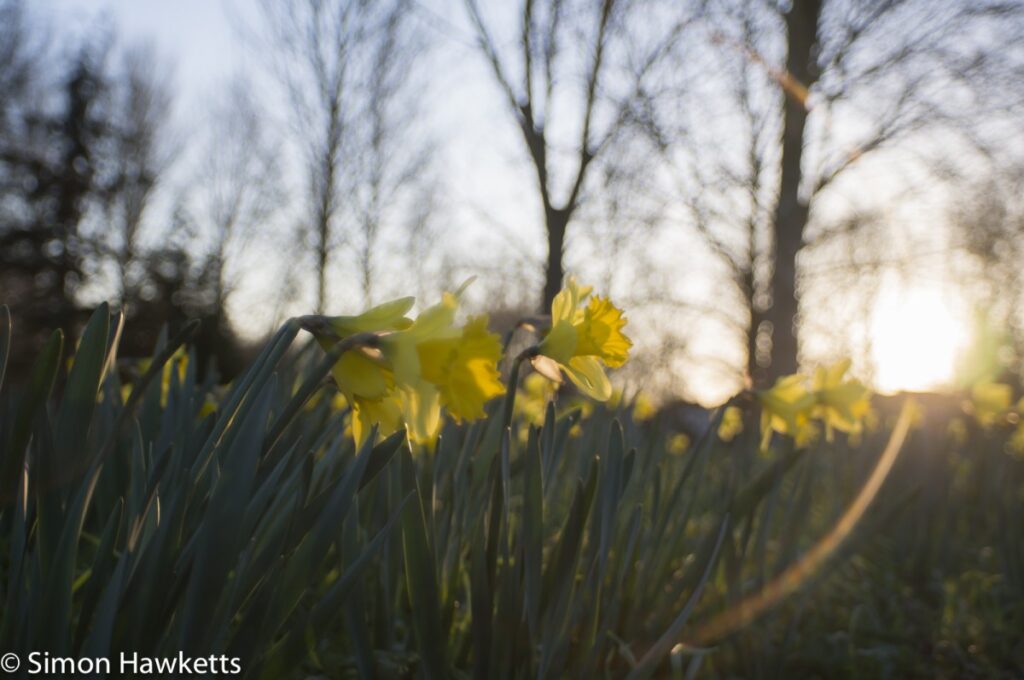

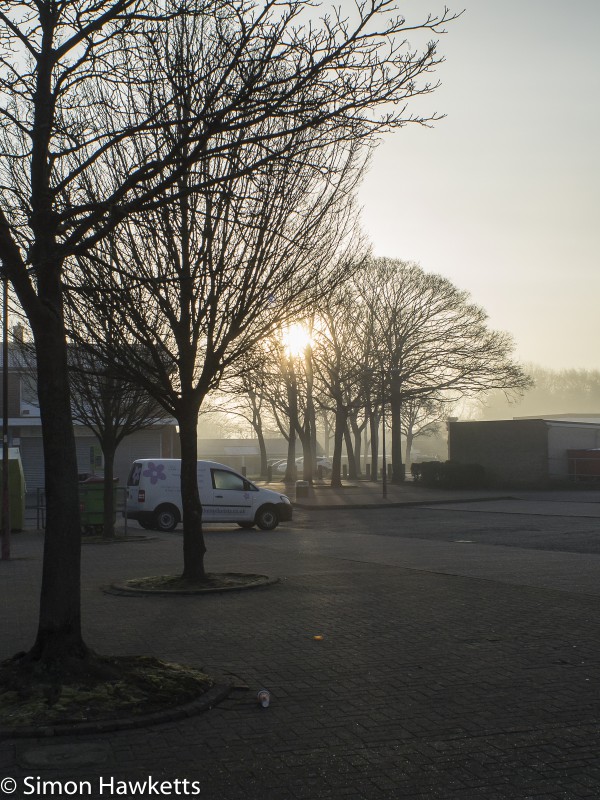
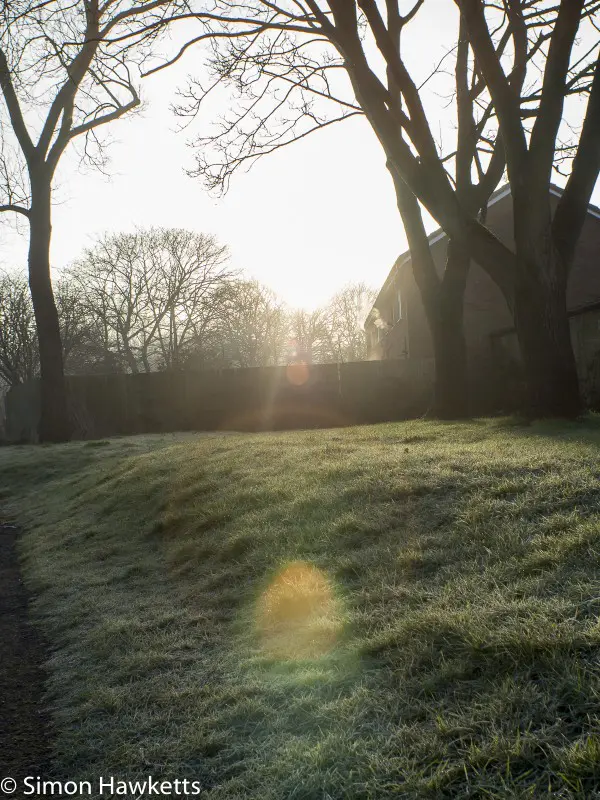
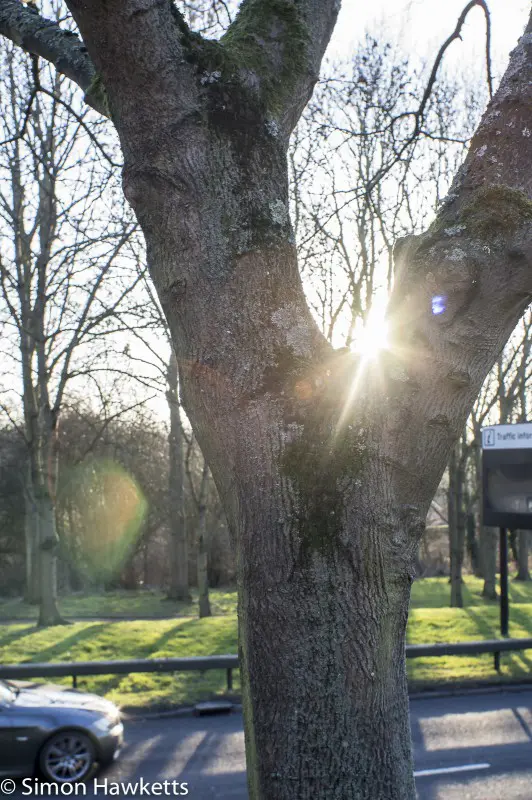
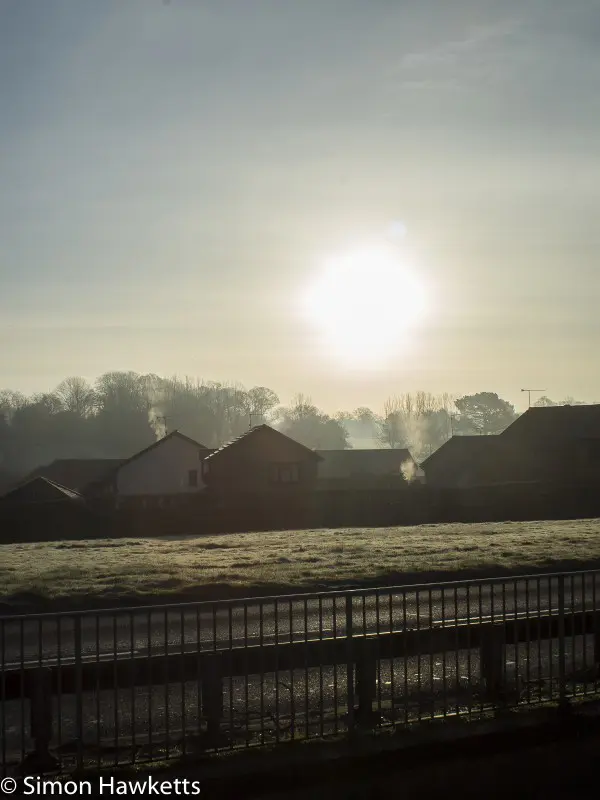

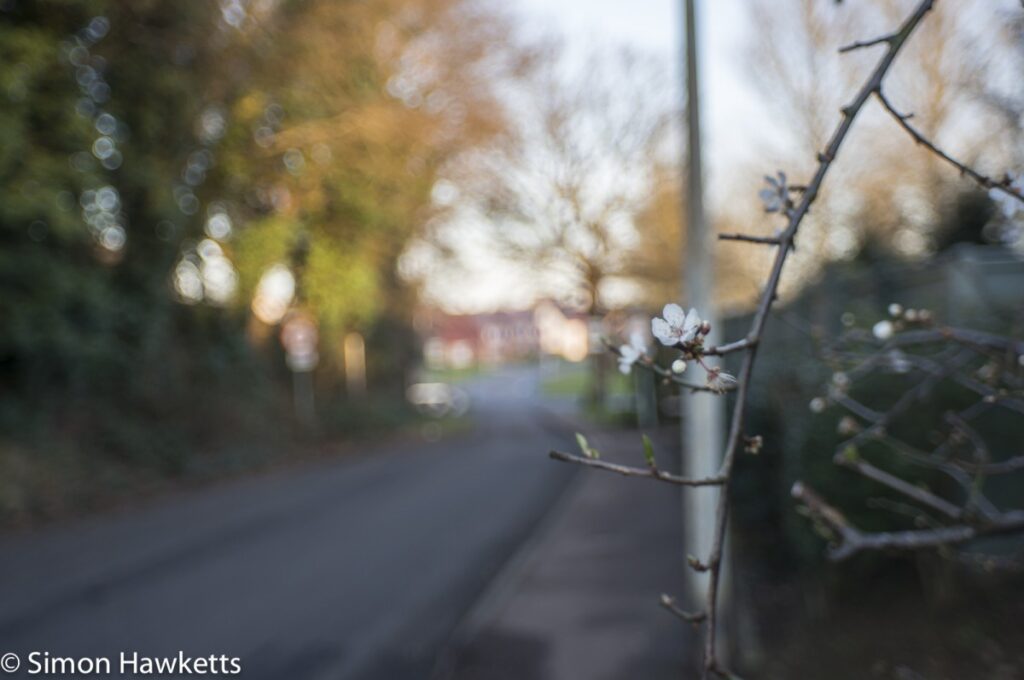
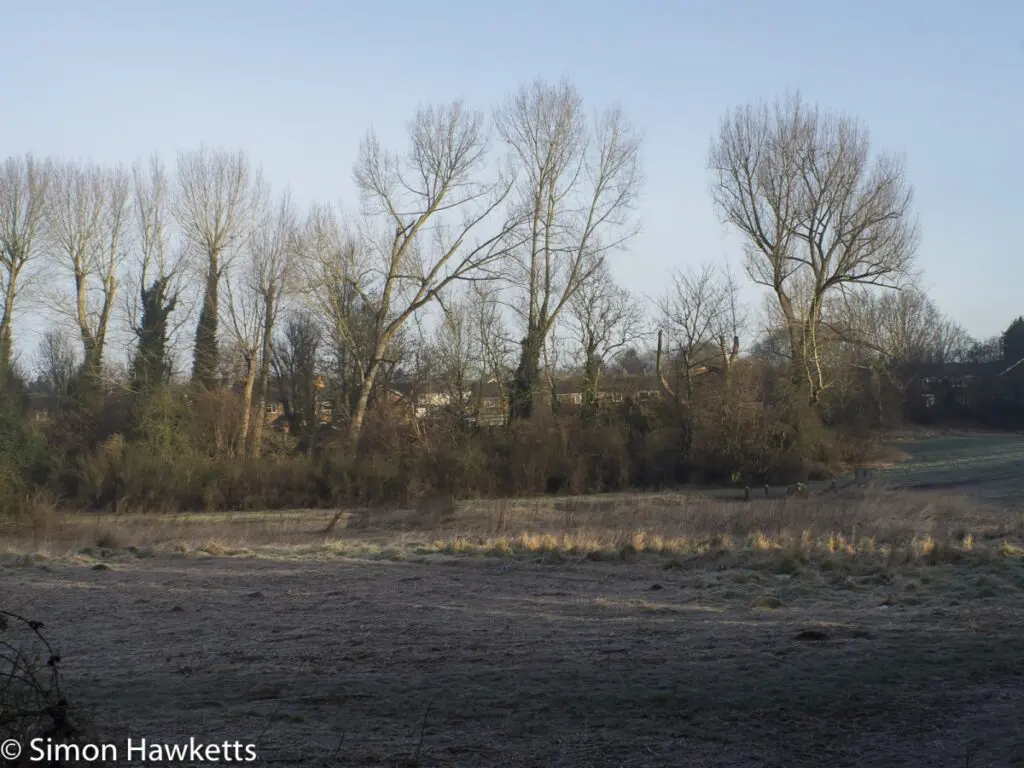
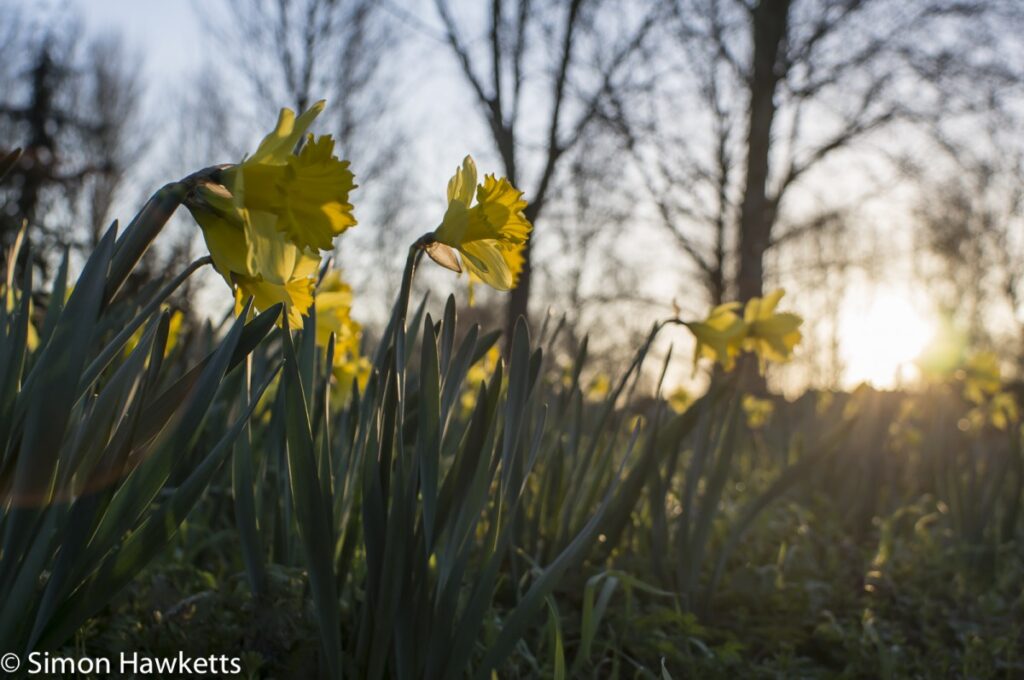
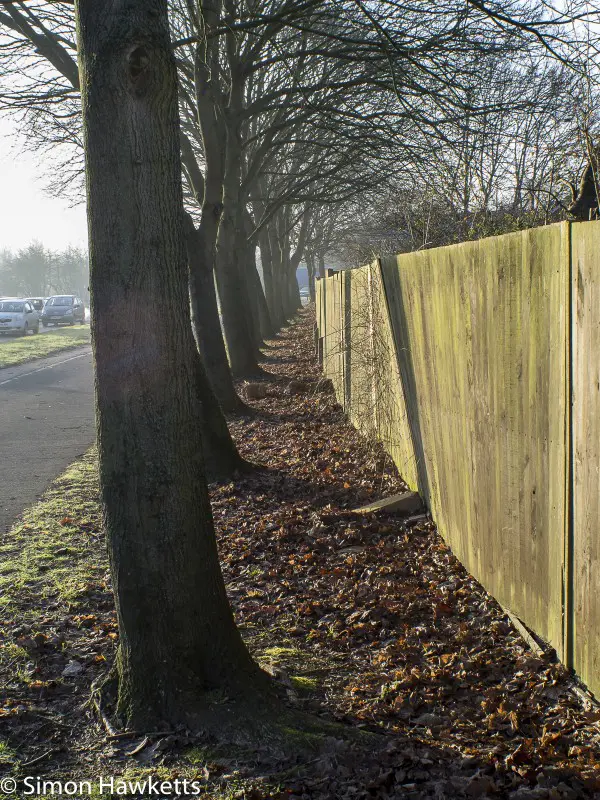
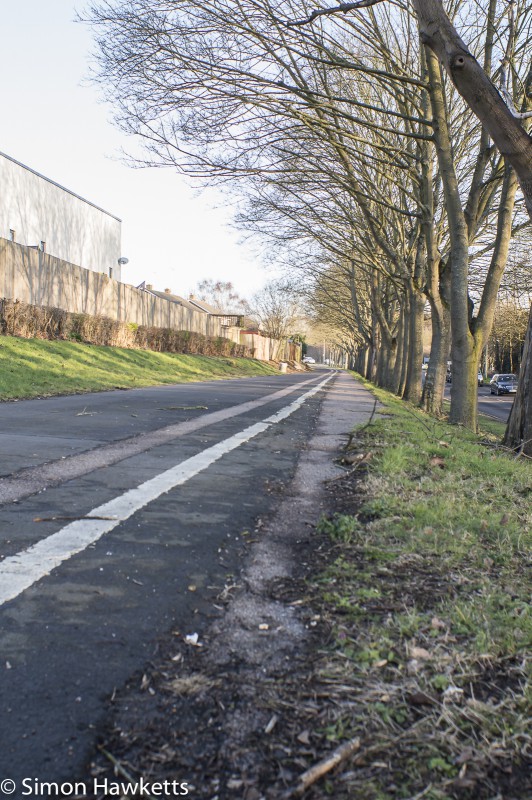
Discover more from Everything Vintage
Subscribe to get the latest posts sent to your email.


